Because of the frequent snowfalls during the first half of December, some ice/mixed routes of the massif were in unusually good conditions at the end of December i.e. late for the season. Among them: the Exocet route, a goulotte line to the rear of a chimney drawing a straight line on the south-east face of Cerro Standhardt, and the Ragni route, a long ice, mixed and rime climb going up the north face of Cerro Torre. In the Ragni route the relatively dry austral winter had prevented the formation of rime (icy snow sticking to the ice and to the rocks) which usually makes the climbing more difficult (cleaning/digging work and bad protections). The Exocet and Ragni routes are graded ED and ED+ respectively but this year favourable conditions probably lowered the Ragni route grade to TD+/ED explaining why such a large number of parties attempted and completed the route. Both routes lead to the summit of two of the most impressive peaks of the massif and have become emblematic due to their difficulty, engagement, itinerary and quality and variety of the climbing. However we did not attempt any of these routes… We had first-hand information on the routes available from Paul, Chris and John, three Canadian guys staying like us at “Refugio Chaltén”, we had all the necessary gear and we had it stashed at the Niponino camp that is the starting point for both routes.
We talked over it a lot, weighing the pros and cons and made our decision for two main reasons: first we are fond of the principle of linear progression that we have always applied with Stephan. Before attempting an ED route you should have climbed enough TD routes of the same climbing style and even more so in a massif where the engagement is higher due to slow and limited rescue (no rescue in the wall). It was not our case since we had climbed only few TD ice/mixed routes. Second we had other worthwhile objectives (although less major…) which were also in good conditions at that time such as the Chiaro de Luna route on Aguja St-Exupéry and the Afanassief or Franco-Argentinean routes on Cerro Fitz Roy. A third reason that concerned only the Exocet route was that only one party can climb the route at a time because of the risk of ice fall in the chimney, raising the probability of retreat during the approach.
When on Thursday morning, after our climbs on El Mocho on Sunday and on Aguja St-Exupéry on Wednesday, we heard that the weather would hold until Monday evening, we did not hesitate too long. We hiked down to Niponino over the chaotic and unstable scree slopes, packed all our equipment and departed for El Chaltén. On the way we ran across several climbers who we asked for information about the routes on Fitz Roy. Before the mid-January “brecha” (the present one), Fitz Roy had only been climbed over the Supercanaleta route by a couple of teams during the New Year “brecha” and by one French team over the Franco-Argentinean route in winter conditions beginning of December.
Once in El Chaltén and after having asked more climbers it turned out that only the long Afanassief route and some other long routes on the Goretta pilar had been climbed successfully during the present “brecha” (long means two bivies in the route). The Franco-Argentinean route had been attempted in the beginning of the “brecha” (on Sunday) but the party had retreated three pitches below the end of the rock climbing part because of large amounts of ice. The long routes were out of question since the time left until the end of the “brecha” was too short (Friday to Monday) and since we did not have the optimal equipment for these long routes. If the second does not intend to jumar it is indeed recommended to have very light backpacks i.e. approach shoes, aluminium crampons and a light two-persons sleeping bag. We thus opted for the Franco-Argentinean route hoping that the ice in the upper pitches had melted enough during the 5 days of good weather which had followed the last attempt. We also knew that at least one other party was attempting or would attempt the route that day or the next day.
The plan was the following: leave El Chaltén on Friday late in the afternoon, hike to the Rio Blanco camp (three hours), bivy there, start at 5 am on Saturday from Rio Blanco to Paso Superior (four hours) in order to benefit from the night refrost on the glacier (there was eventually no refrost), take some rest during the day until the departure at night on Sunday, summit on Sunday and return to El Chaltén on Monday. We did not take any tent with us to be as light as possible.
On Saturday morning we were at Paso Superior where we met two of the three parties that had attempted the route on Friday (and first ones since the party on the previous Sunday). One Austrian party had reached the summit, climbing the last three pitches with crampons and ice axes and being back late on the same day at Paso Superior. The second party, an American one, had turned back halfway up and the third party, also American, was still on the mountain (they had bivied close to the summit). Later that day, Tim and Sam, a Belgian party showed up at Paso Superior also intending to climb the Franco-Argentinean route on Sunday.
We woke up at 11.30 pm and left Paso Superior at 0.30 am on Sunday followed by the Belgian party. The refrost was only superficial and stepping aside tracks meant breaking through a delightful crust. We traversed the slopes below the bergschrund to the left until we could spot the tracks of the Friday parties. We found two sets of tracks crossing the bergschrund over snow bridges that no longer existed. The bergschrund was 5 to 10 m high (double as high if you would have rappelled in it to climb it) and overhanging. We traversed further to the left and almost as far as Aguja Poincenot we encountered a zone where the bergschrund had partly collapsed. A small berm was overlooked by 4 m of steep ice and 3 m of overhanging snow/ice mixture. Stephan engaged in the dodgy section, digging through the snow/ice upper part, desperately looking for good anchor points for his ice axes and trying to make the mantle less steep until he suddenly fell backwards and landed on the berm 5 m below, luckily without getting hurt. He left his backpack on the berm, took the one “estaca” we had and courageously went back to the fight. Some minutes later he had overcome the bergschrund and was hauling his backpack. I joined him and we made a long traverse to the right on 60 degrees steep snow slopes. We linked up with the tracks of the Friday parties and followed the base of a rockwall, stepping over ice and bad snow. We eventually came up against some rocks and climbed two pitches up to the ridge overlooking the Brecha de los Italianos. We scrambled down to the breach and took a break waiting for the sun to rise. It was 5.30 am. We had a soup and we stashed the sleeping bag, the mattress, the radio, the cooker, some food and two ice axes (out of four).
With the first sunlight we climbed easy rocks up to la Silla, the snow saddle at the base of the south-east face of Fitz Roy where the Franco-Argentinean route starts. We climbed the first ten pitches (of which some beautiful continuous crack pitches) relatively fast despite many wet sections and our heavy backpacks. The leader carried his mountain boots and his clothes while the second carried his boots and his clothes plus two pairs of crampons, two ice axes, food and water. The 6th grade pitches were sustained but not undergraded as on Aguja Media Luna or El Mocho. On the contrary the 5th grade pitches often included a 6th grade section.
From pitch 11, many cracks were filled with ice and water was flowing on top of it. We climbed the two first 5th grade pitches at the expense of some gymnastics, wet clothes, cold hands (we were in the shade by then) and one ice screw! We then had the choice between a 6c pitch on the left that had turned into a waterfall and a 5+ pitch on the right that was sprayed with large amounts of melting ice. Stephan opted for a variant in the middle. He gained some height removing ice from cracks and holds with his ice axe, overcame a difficult dihedral with the back on one side and the feet on the other and eventually topped out on snow slopes marking the end of the difficulties. The Belgian party had caught up and chose the same option.
We put on boots and crampons and climbed the last 250 m of 50 degrees steep ice. At 6 pm, almost 18 hours after having left Paso Superior, we were standing on the summit of Fitz Roy, warmed up by the sun still high in the sky but shaken and cooled down by high winds while admiring the Campo de Hielo, a huge, flat glacier covered with snow stretching beyond the Torre massif. We started to abseil stucking the rope only once in the upper slopes.
At 11 pm, around 20 rappels later, we were at the Brecha de los Italianos. We had a five-course supper (1 cracker = 1 course) and tested the concept of one sleeping bag and one matress for two, sitting instead of lying down because of the lack of space. We experienced the feeling of being so tired that we only thought of sleeping but being prevented from it by the cold and the discomfort of the position.
At 4.30 am, tired of not sleeping, we prepared some tea, ate the last crackers and at 5 am we were abseiling the first out of eight rappels from the breach down to the glacier. The Belgian party had stuck their rope in the last rappel before la Silla so that they had to spend the night up there and to climb the first pitch again in the morning to unstuck their rope. At 8.30 am on Monday we were back at Paso Superior happy, tired and relieved, 32 hours after having left. We ran down in the midday heat to Lago de los Tres, Rio Blanco and Laguna Capri where we had a swim and ate our last rations of bread, “cremoso” cheese and “dulce de membrillo” (quince).
On Tuesday the “brecha” was over and the wind was blowing again through the streets of El Chaltén. Within 2.5 hours, at our hostal, we sold 30 kg of gear (ropes, friends, ice screws, backpack, poles, expresses, tent, clothes) to Argentinean climbers. On Wednesday morning we were leaving our homelike hostal “la Casa de Jesús”, Natalia and the kids with heavy hearts after three and a half weeks in El Chaltén. Soon it would be time to leave South America as well.
We climbed:
Fitz Roy, Franco-Argentinean route, ED-, 650m 6c+ (6a/A1) 55°
More pictures can be found here.

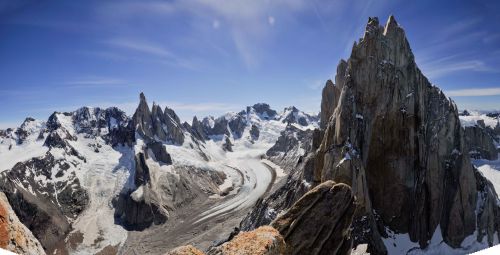
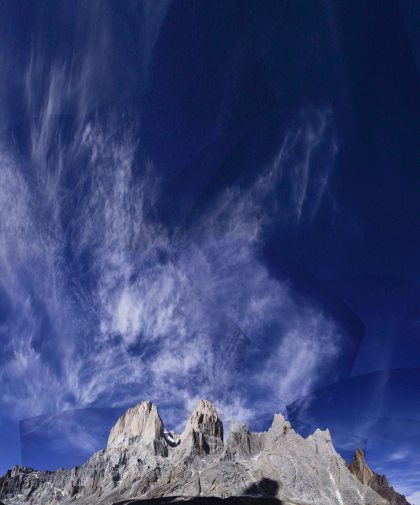
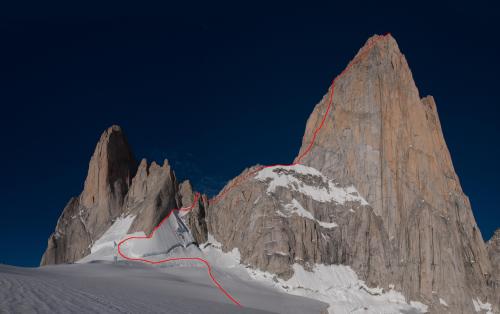
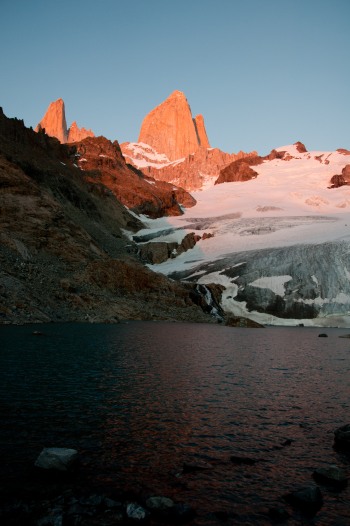

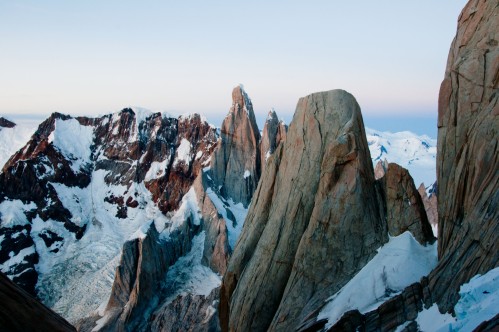
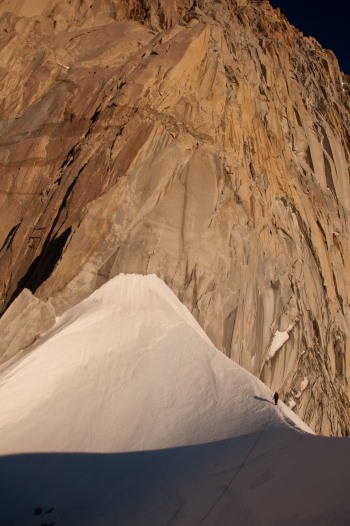
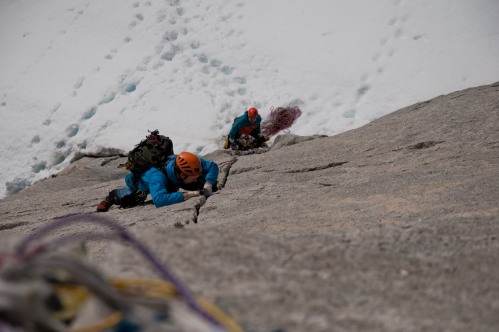
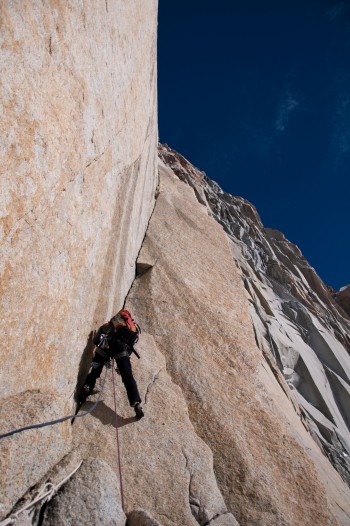
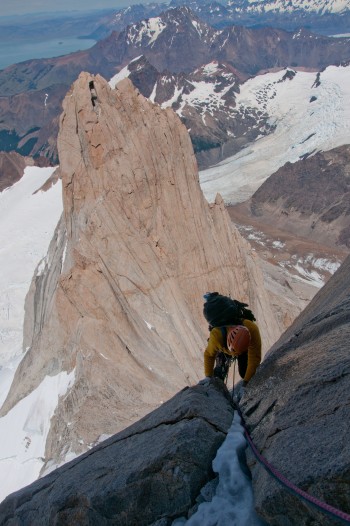
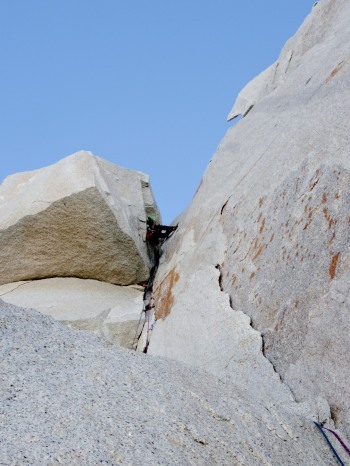
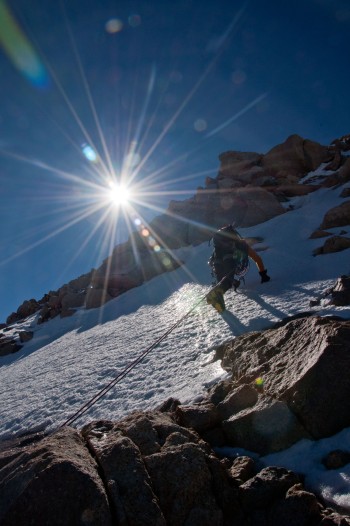
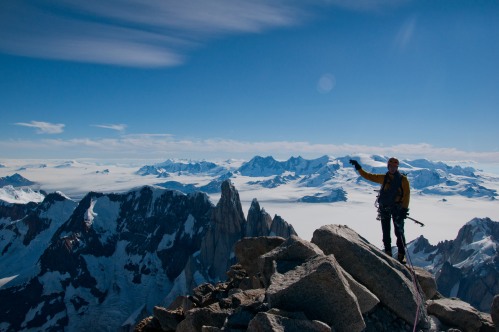
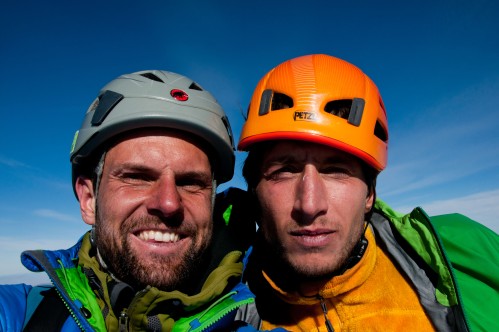
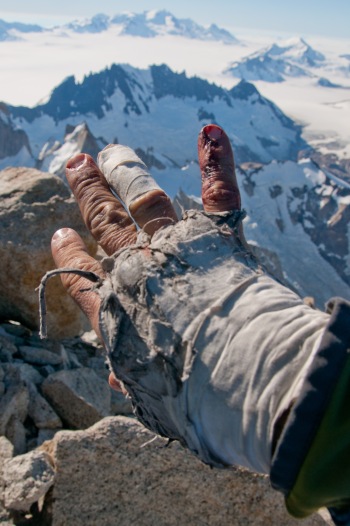
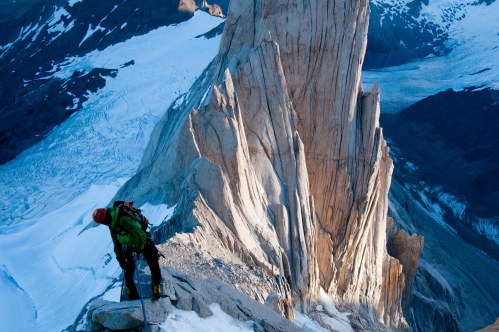

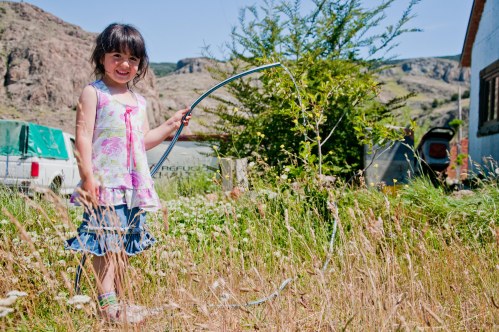
Houhaou! Joli les amis! Magnifique sommet pour conclure en toute beauté ce beau voyage! Encore de très très belles images, comme toujours 😀
Heroes !!!!!!!!!!
Awesome climb, congrats! And thanks for the post about it. This mountain rocks!
Thanks for writing! Even a year after I dream of it! It’s time to go back!